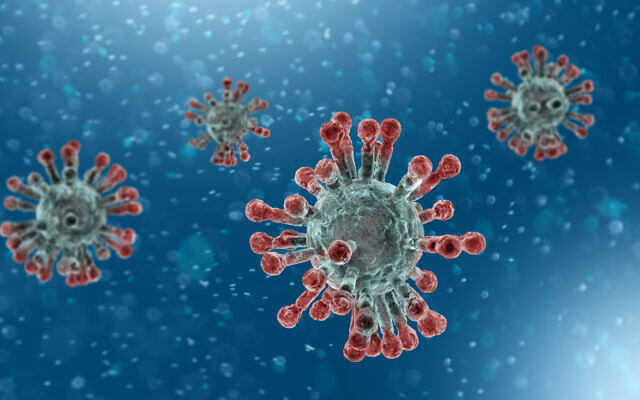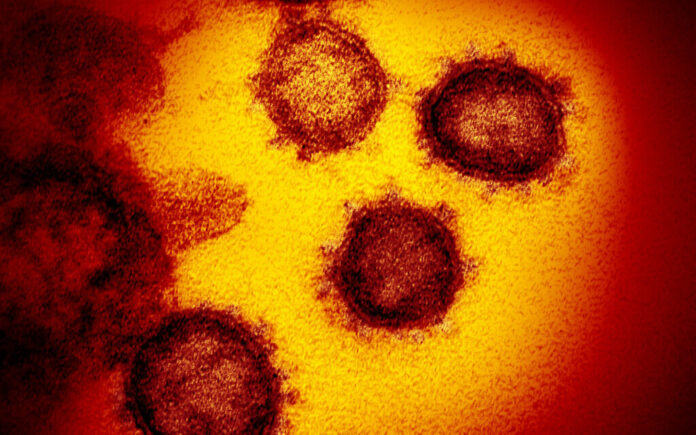A form of the novel coronavirus which has become the dominant type in much of the world may have done so thanks to a mutation that allows it to better latch onto human hosts’ cells, new research indicates.
Lab tests performed by US-based Scripps Research, in a study which has not yet been peer-reviewed, showed that this isolate of the SARS-CoV-2 virus (as the coronavirus is officially known) was much more infectious than others when introduced to cell cultures.
Researchers said the Spike D614G mutation, which has proliferated around the world, has sturdier spikes — the projections on the virus’s body through which it attaches to cells and which give the virus its “crown,” or “corona” — than the original Wuhan strain.
Get The Times of Israel’s Daily Edition by email and never miss our top stories
Free Sign Up
Virus particles with the mutation thus tended to have 4 to 5 times the number of functional spikes, enabling them to more easily bind to cells.
“Viruses with this mutation were much more infectious than those without the mutation in the cell culture system we used,” Scripps Research virologist Hyeryun Choe, who led the study, said.
Specifically, they were “nearly 10 times more infectious in the cell culture system that we used.”
The D614G mutation has been the most widely-observed form in North America and Europe. Study co-author Michael Farzan said the form first appeared in a global database in February, and by May was present in 70 percent of uploaded samples.
“Over time, it has figured out how to hold on better and not fall apart until it needs to,” Farzan says. “The virus has, under selection pressure, made itself more stable.”
While potentially more infectious, there is no evidence that the virus is more aggressive or causes more hospitalizations and fatalities than other strains.
It is also worth noting that a higher infection rate in lab conditions does not necessarily mean the same applies when the virus acts inside a host.

A microscopic 3D rendering of coronavirus (Naeblys/iStockPhoto)
All viruses mutate over time, though scientists have said SARS-CoV-2 appears to be relatively stable, mutating at a slower rate than seasonal flu. This could be important in developing an effective vaccine.
The Spike D614G mutation first gained attention in April when the Los Alamos National Laboratory said it was “of urgent concern” due to its proliferation, “increasing in frequency at an alarming rate, indicating a fitness advantage relative to the original Wuhan strain that enables more rapid spread.”
Many scientists have urged caution in jumping to conclusions regarding the infectiousness of the strain, pointing to other factors that may have contributed to its spread: for example the strain may have, by chance, stumbled upon a particularly susceptible population, such as the elderly in Italy, allowing it to greatly increase its spread.
The Scripps lab results boost the viability of the claim, but will need to be replicated by other studies.
Kristian Andersen, another Scripps geneticist, noted to The New York Times that other analyses of virus variants in labs had not found significant differences in infection rates.
“That’s the main reason that I’m so hesitant at the moment,” Andersen said. “Because if one really was able to spread significantly better than the other, then we would expect to see a difference here, and we don’t.”
In late May researchers in University College London said their studies of the genomes of more than 15,000 samples had not shown one strain being more infectious than others.
Scientists will likely seek to test D614G in animals to check whether it shows higher infection rates when working inside hosts’ bodies.






